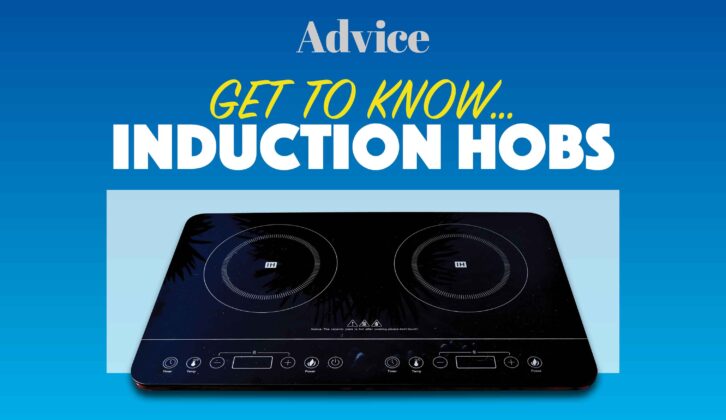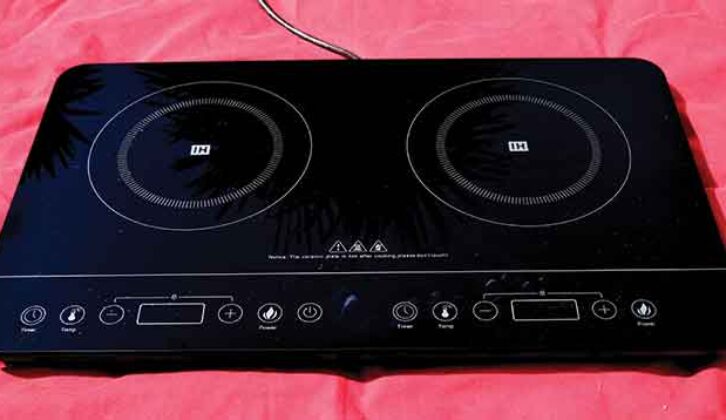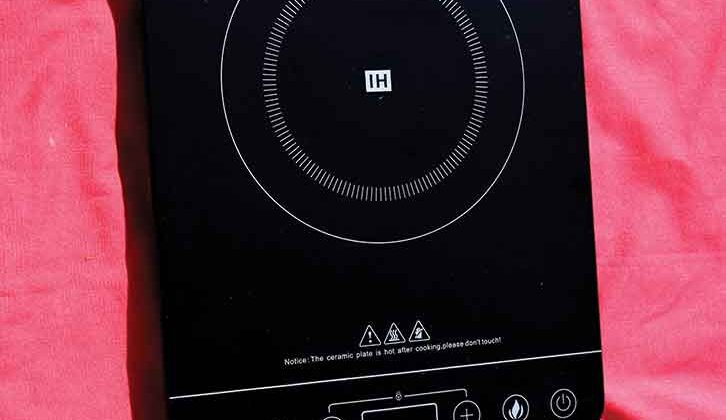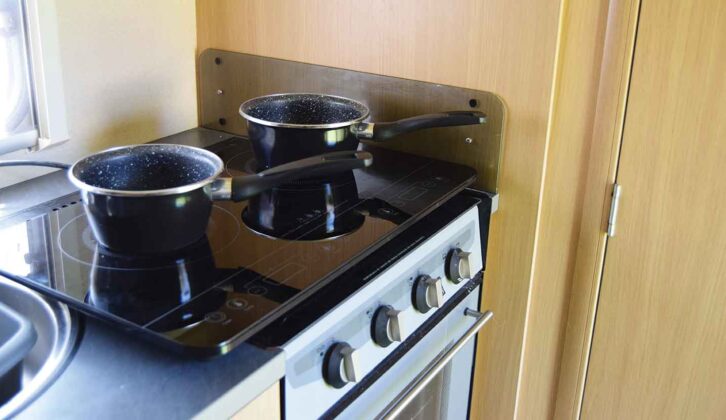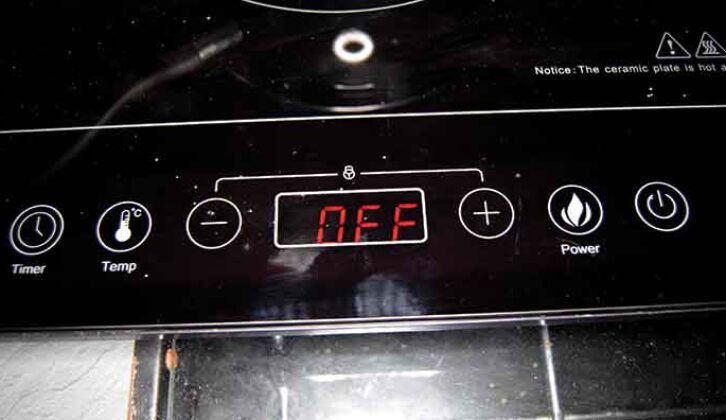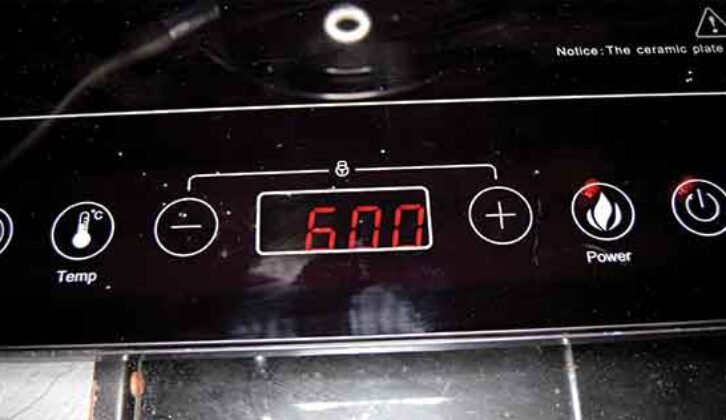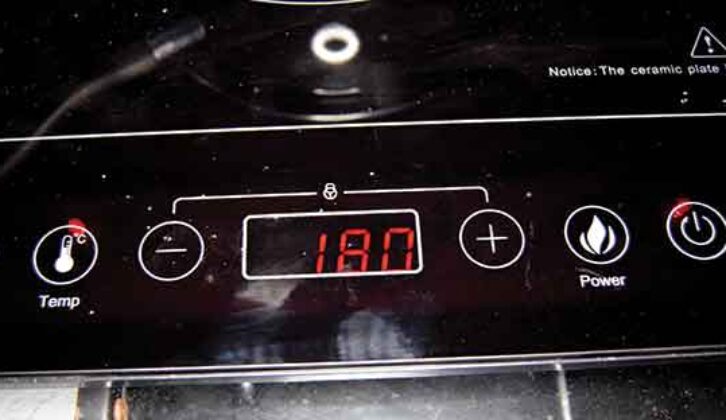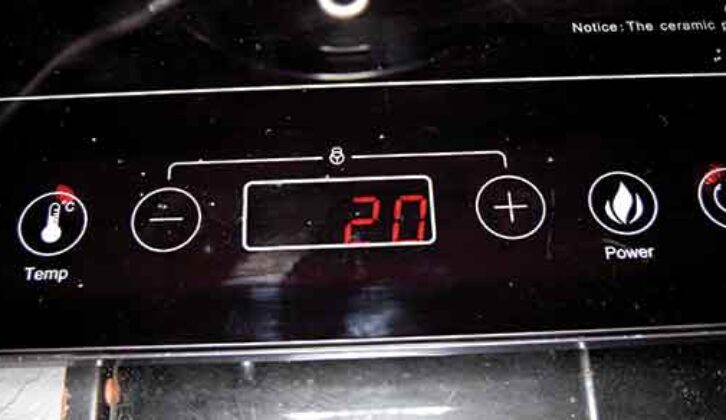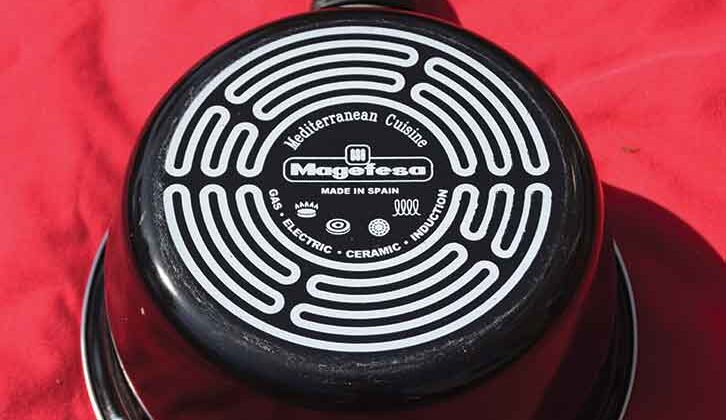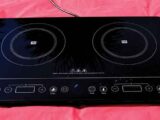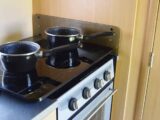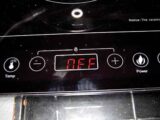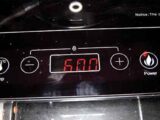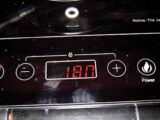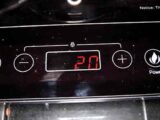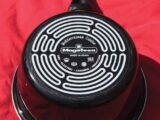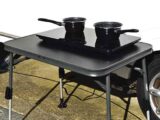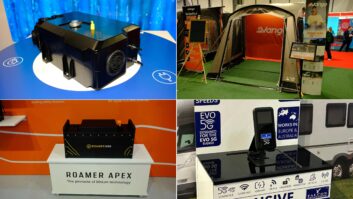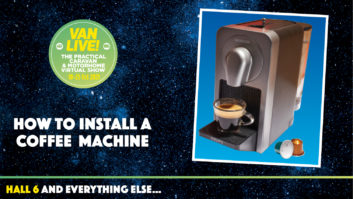The cost of energy in general has been rising dramatically in recent times, resulting in steep increases in gas and electricity prices. Most ‘vans use bottled gas for cooking and to a lesser extent, space heating. The cost of refilling a 6kg propane gas bottle (probably the most common size) can be eye-watering, depending on where you purchase it. Luckily, having an induction hob for your campervan or motorhome can minimise this cost – by a margin – helping to provide a way of motorhoming on a budget.
The mains hook-up
Many ‘van owners choose to spend their time on motorhome sites where there is often a mains hook-up facility.
In the UK, hook-up points provide 230V AC along with a breaker set at 10A; that is, if more than 10A is taken, the supply is cut.
Another consideration to be taken into account is that unlike some European sites (Germany in particular), the supply is not usually metered – so no record is made of the amount of electricity used by individual pitches and charged accordingly. You can also bet your life that site owners would not want to entertain the cost of converting to individual pitch metering any time soon.
This configuration provides, by default, 2.3kW (230V x 10A) of power, included in the pitch fee. There are usually no time constraints, so in theory, you could use a continuous 2.3kW for your stay – although in reality, this doesn’t happen (much to the site owner’s relief!). But that power is yours to tap and included in the price. Why not use it?
Cooking in a motorhome is usually on a gas hob, making this one of the main drains on those expensive bottled gas supplies. But by adopting the use of portable induction hobs, any cooking can be done using the notionally ‘free’ (included in the pitch fee) electricity from the hook-up.
Many of you will already have experience of induction hobs, in that you have one at home. To those of you who do, I won’t bother preaching to the converted. To the rest, however – listen in.
Why use a campervan induction hob?
Induction hobs are not particularly new and have been available for household use for a number of years. They are also increasingly being fitted in new-build houses, as they offer greater efficiency and convenience; and anyhow, as an aside, gas is rapidly becoming a polluting pariah.
However, at best, motorhomes usually only boast the inclusion of one electric hotplate in the kitchen. Although useful, they suffer from ‘latency’; that is, they take a long time to heat up and a long time to cool down again, none of which is good if something is boiling over.
The technology in an induction hob
Despite having been around for quite a while now, induction hobs are a much misunderstood electronic campervan gadget.
Many people assume that they operate just like a gas hob, with heat being generated in the hob itself and then transferred by conduction to the pan. Wrong! In fact, no heat is generated in the induction hob. All of the heat is generated in the base of the pan, which leads to a very efficient heat transfer into the food you are cooking, allowing you to serve up on your motorhome crockery and enjoy your feast.
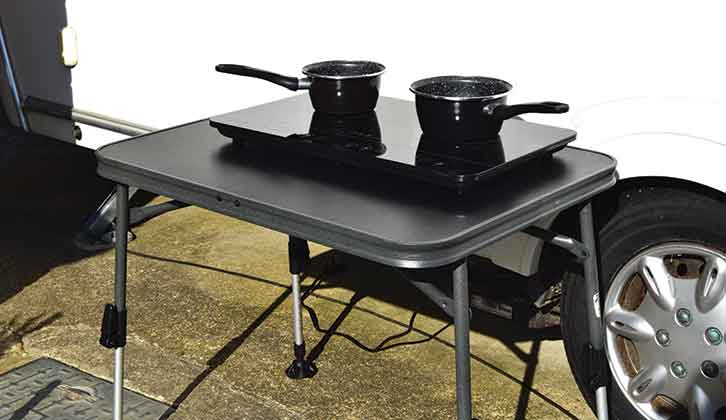
Induction hobs are a sophisticated piece of electronic wizardry, which converts the incoming mains to a frequency of around 30kHz before feeding it into an induction coil situated just beneath the pan holding the food being cooked.
This induces electrical eddy currents into the base of the pan and the inherent resistance in the iron/steel generates the heat.
Using the correct pans
Only pots and pans with a suitable base can be used on induction hobs. Suitable utensils have an iron or steel insert in their base, in which the electrical eddy currents flow, producing the heat. So it’s important to note, conventional copper and aluminium pots and pans will not work.
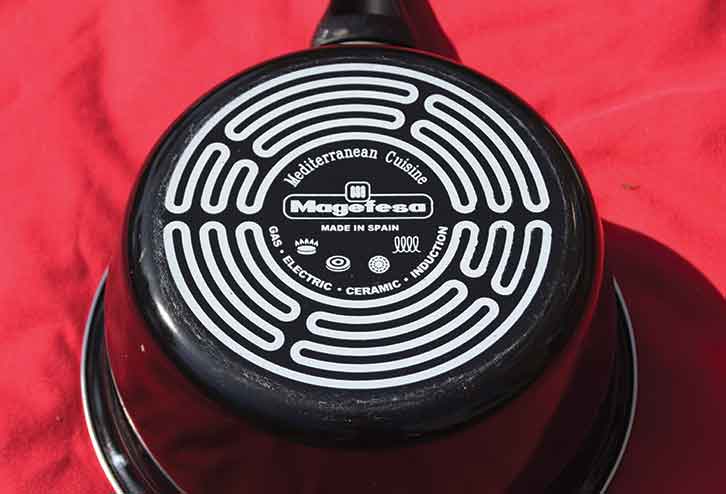
Pots and pans that are suitable for use on an induction hob will usually have the coil emblem, or some appropriate wording, on their base. These days, most pots and pans are suitable for induction hobs, but of course, it always pays to double-check beforehand.
Putting you in control
Being electronic, induction hobs offer a large degree of control, ranging from cooking duration, temperature control, prevention of overheating of the pan because of boiling dry, to sensing that a suitable pan is present, and so on. The power can also be reduced or increased rapidly, giving a very high level of control.
An additional benefit is that, unlike gas hobs, with an induction hob, there are no naked flames and combustion fume issues to worry about.
Portable induction hobs are available in a choice of sizes, but single and double models are most suited for use in a leisure vehicle. A single hob can be as cheap as £25, while doubles come in at around £60 or more (sourced on eBay).
In my ’van, I put the induction hob on top of the gas hob glass cover, which is adjacent to a power socket. But portable hobs are easily moved, so I also use them for outdoor cooking, placed on a table alongside the ’van and with an extension lead (when the weather permits!).
Power budget considerations for your campervan induction hob
Induction hobs are quite power hungry. Most single portable units are rated at 2kW, which in essence, means their maximum consumption (turned up fully) is going to take just over 8A. Most ’vans (and hook-up supplies) are rated at 10A, so consideration needs to be taken for other equipment drawing current at the same time.
Double induction hobs are rated at 2.0-2.8kW which, in the case of the latter, if turned up fully, will definitely take out the 10A breaker.
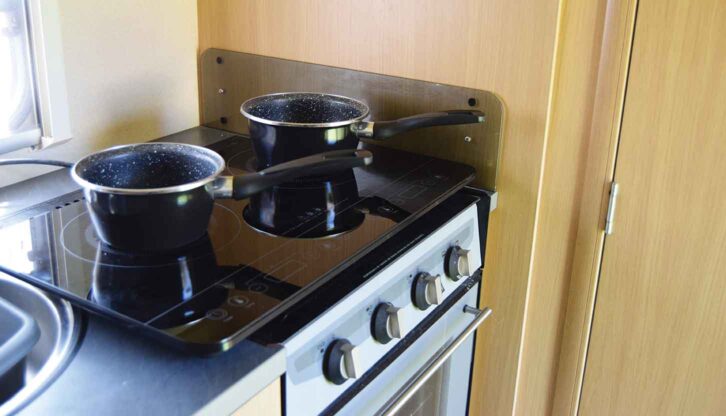
However, these are maximums. I find that in the case of the double hob, running both sides at just over half power (about 1.6kW), things work very well. But it must be remembered that all of the heat is imparted to the food being cooked, and it is this that enables meaningful usage.
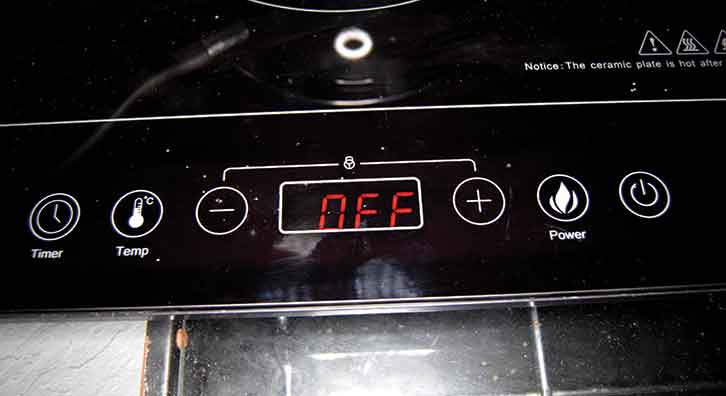
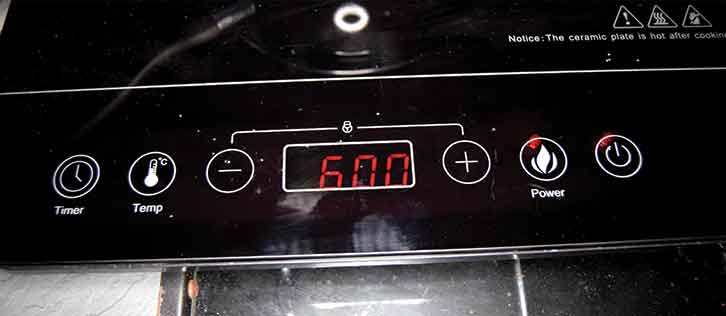
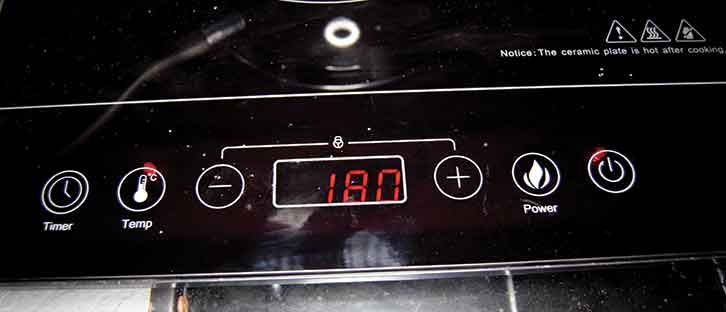
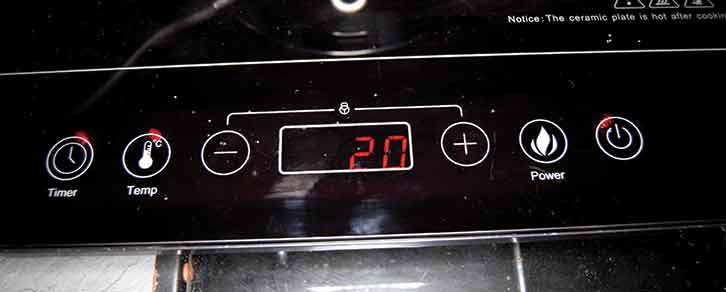
- If you’re looking for a table where you can sit outside and enjoy your food at, our best camping table guide is sure to help you find the one for you.
Future Publishing Limited, the publisher of Practical Motorhome, provides the information in this article in good faith and makes no representation as to its completeness or accuracy. Individuals carrying out the instructions do so at their own risk and must exercise their independent judgement in determining the appropriateness of the advice to their circumstances. Individuals should take appropriate safety precautions and be aware of the risk of electrocution when dealing with electrical products. To the fullest extent permitted by law, neither Future nor its employees or agents shall have any liability in connection with the use of this information. Double check any warranty is not affected before proceeding.
If you’ve enjoyed reading this article, why not get the latest news, reviews and features delivered direct to your door or inbox every month. Take advantage of our brilliant Practical Motorhome magazine SUBSCRIBERS’ OFFER and SIGN UP TO OUR NEWSLETTER for regular weekly updates on all things motorhome related.
